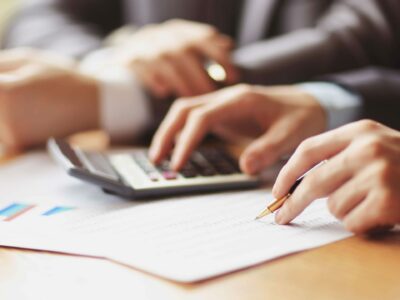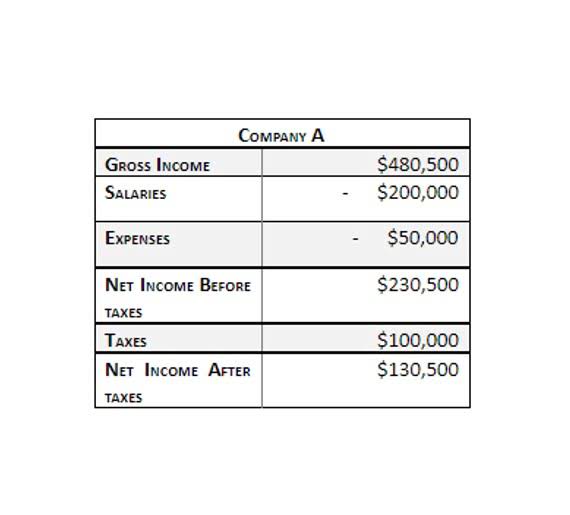
A record in the general ledger that is used to collect and store similar information. For example, a company will have a Cash account in which every transaction involving cash is recorded. A company selling merchandise on credit will record these sales in a Sales account and in an Accounts Receivable account. If a company issues monthly financial statements, the amount of each monthly adjusting entry will be $166.67.
Importance of Proper Asset Classification

Depreciation is often misunderstood as a term for something simply losing value, or as a calculation performed for tax purposes. Depreciation is an important part of your business’s tax returns, but it is a complex concept. Keep reading to learn what depreciation is, how it is calculated and how your depreciation calculation can affect your business. If you have expensive assets, depreciation is a key accounting and tax calculation.

Methods Of Calculating Depreciation Expense
Once you’ve chosen a depreciation method, apply it consistently for similar assets to maintain comparability across financial periods. Changing methods should only be done if it results in more appropriate or reliable financial reporting. For assets you law firm chart of accounts expect to use for their entire lifespan, a straight-line method could be more appropriate. Align your depreciation method with your strategic plans for the asset to ensure accurate financial reporting.

You’re our first priority.Every time.
- By strategically managing your depreciation, you can potentially reduce your tax burden and improve your business’s cash flow.
- Thus, depreciation expense allows businesses to reduce the value of an asset each year to account for its obsolescence or wear and tear.
- Instead, this depreciation will be initially recorded as part of manufacturing overhead, which is then allocated (assigned) to the goods that were manufactured.
- Capital expenditure is a fixed asset that is charged off as depreciation over a period of years.
- Consider common practices within your industry when choosing a depreciation method.
- Assuming the company pays for the PP&E in all cash, that $100k in cash is now out the door, no matter what, but the income statement will state otherwise to abide by accrual accounting standards.
She supports small businesses in growing to their first six figures and beyond. Alongside her accounting practice, Sandra is a Money and Life Coach for women in business. Note that your conditions and location can also have different wear and tear effects on your asset. For example, buildings and equipment in areas with strong weather may see more rapid wear and tear from rust, water, and environmental damage.
- Usually financial statements refer to the balance sheet, income statement, statement of cash flows, statement of retained earnings, and statement of stockholders’ equity.
- In determining the net income (profits) from an activity, the receipts from the activity must be reduced by appropriate costs.
- Fixed assets lose value throughout their useful life—every minute, every hour, and every day.
- The asset’s cost minus its estimated salvage value is known as the asset’s depreciable cost.
Depreciation and Taxes
An accounting loss depreciation expense definition results from expensing a revenue-generating asset instead of capitalizing it and thus, not creating any future value for the company. The expenditure incurred on the purchase of a fixed asset is known as a capital expense. Capital expenditure is a fixed asset that is charged off as depreciation over a period of years. Thus, the cost of the asset is charged as an expense to the periods that benefit from the use of the asset. The part of the cost that is charged to operation during an accounting period is known as depreciation.
Depreciation in Financial Statements

Find out what your annual and monthly depreciation expenses should be using the simplest straight-line method, as well as the three other methods, in the calculator below. The assumption behind accelerated depreciation is that the fixed asset drops more of its value Certified Public Accountant in the earlier stages of its lifecycle, allowing for more deductions earlier on. The depreciation expense is scheduled over the number of years corresponding to the useful life of the respective fixed asset (PP&E). The straight-line depreciation method gradually reduces the carrying balance of the fixed asset over its useful life. Depreciation is listed as an expense on your income statement since it represents part of the asset cost allocated to the period. It’s not an asset or a liability itself, but rather an accounting tool used to measure the change in value of an asset.
If we expensed capital assets, we would be recording all of the expenses for an asset that will last five plus years in the year of the purchase. Depreciation is a complex process and I highly recommend allowing the company’s accountant or tax advisor to handle the depreciation of assets. They can also advise if a purchase should be treated as an expense or an asset in the accounting system.
- On the balance sheet, depreciation expense reduces the book value of a company’s property, plant and equipment (PP&E) over its estimated useful life.
- • Depreciation is used to account for the decline in value of physical assets, such as property, plant, and equipment.
- The difference between assets and expenses is significant when it comes to accounting.
- The asset’s cost and its accumulated depreciation balance will remain in the general ledger accounts until the asset is disposed of.
- There are different depreciation methods (e.g., straight-line, double declining balance) that affect tax and financial reporting.
Different methods include straight-line and double-declining balance methods for calculating depreciation, and each method has its benefits. Knowledge of how depreciation works is therefore important in financial reporting as well as for effective tax planning. Depreciation is thus the decrease in the value of assets and the method used to reallocate, or “write down” the cost of a tangible asset (such as equipment) over its useful life span. Businesses depreciate long-term assets for both accounting and tax purposes.
